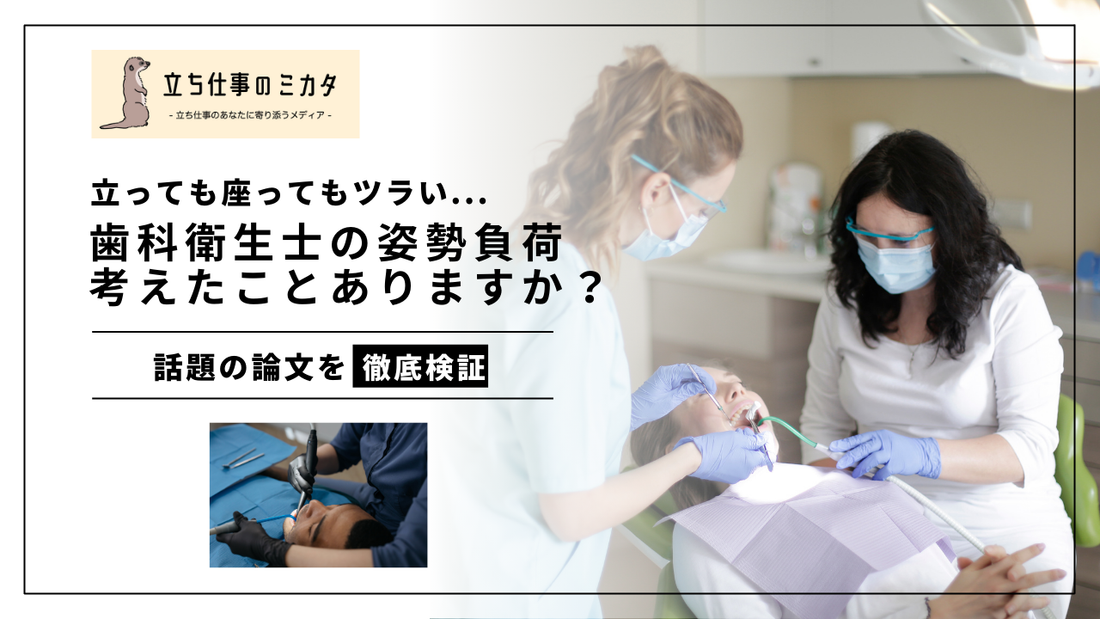
Have you ever thought about the physical burden of being a dental hygienist? It's hard whether you're sitting or standing...
Share
Introduction
Dental hygienists are said to be prone to strain on their muscles and joints because their work involves long periods of time in the same posture and repetitive movements. Here, we introduce a research paper that compares the difference in posture between sitting and standing while working with dental hygiene students.
Research Overview
The study involved 35 second-year dental hygiene students (all female) with no muscle or joint disorders. They performed a plaque removal task in a simulated oral environment and examined the difference in posture between sitting and standing. A tool called the Rapid Upper Limb Assessment (RULA) was used to assess posture.
Presentation of research results
1. Figure 1: Comparison of sitting and standing postures
The study found the following differences in posture:
- Sitting position (Figure 1A) : This tends to cause you to lean forward, putting strain on your neck, arms, and wrists.
- Standing position (Figure 1B) : It is easy to straighten your back, but it can put strain on your shoulders, arms, and neck.
Both positions have their pros and cons, and neither is necessarily better than the other.

2. Table 1: Participant characteristics
- Most participants (85%) were between 18 and 29 years old .
- Many people (88%) use loupes (magnifying glasses), which may affect their posture.

3. Table 2: Comparison of sitting and standing postures (RULA score)
- Mean sitting score : 3.91 (SD = 0.77)
- Standing mean score : 4.50 (SD = 1.00)
- The difference was statistically significant (p = 0.001).
The higher the score, the greater the strain on the body. In other words, working while standing puts more strain on the body than working while sitting .
Additionally, 68% of participants reported feeling more strain while standing , but even when sitting, their posture was not entirely ideal, and both positions had room for improvement.

Real-life applications and considerations
1. Learning correct posture is important
In the study, participants were instructed on how to sit and perform tasks, but not how to stand, so learning how to use a standing posture correctly may be important .
2. Sitting and standing postures should be alternated.
It has been found that in other jobs, the burden on the body can be reduced by balancing "sitting" and "standing." Dental hygienists may also be able to distribute the burden on their bodies by sitting and standing appropriately, rather than maintaining the same posture all day .
3. Optimize your work environment
- Adjust the height of your chair or workbench
- Use a magnifying glass or cushion
4. Implement posture self-checks
- Taking photos of your posture while working and checking them can help you become more aware of things.
- Stretching regularly can help relieve tension in your body.
summary
This study revealed that dental hygienists are burdened with tasks whether they are sitting or standing , and that the burden is particularly high when working standing up, so appropriate training is necessary .
Also,
- 68% of participants felt that standing was more stressful
- The sitting position is also not ideal and there is room for improvement.
- Risk may be reduced by combining sitting and standing in moderation.
Such important points were obtained.
In future research,
- Investigating the effects of alternating between sitting and standing
- Analyzing posture changes and strain during long hours of work
- Create a posture improvement program for dental hygienists It is expected that issues such as these will be addressed.
